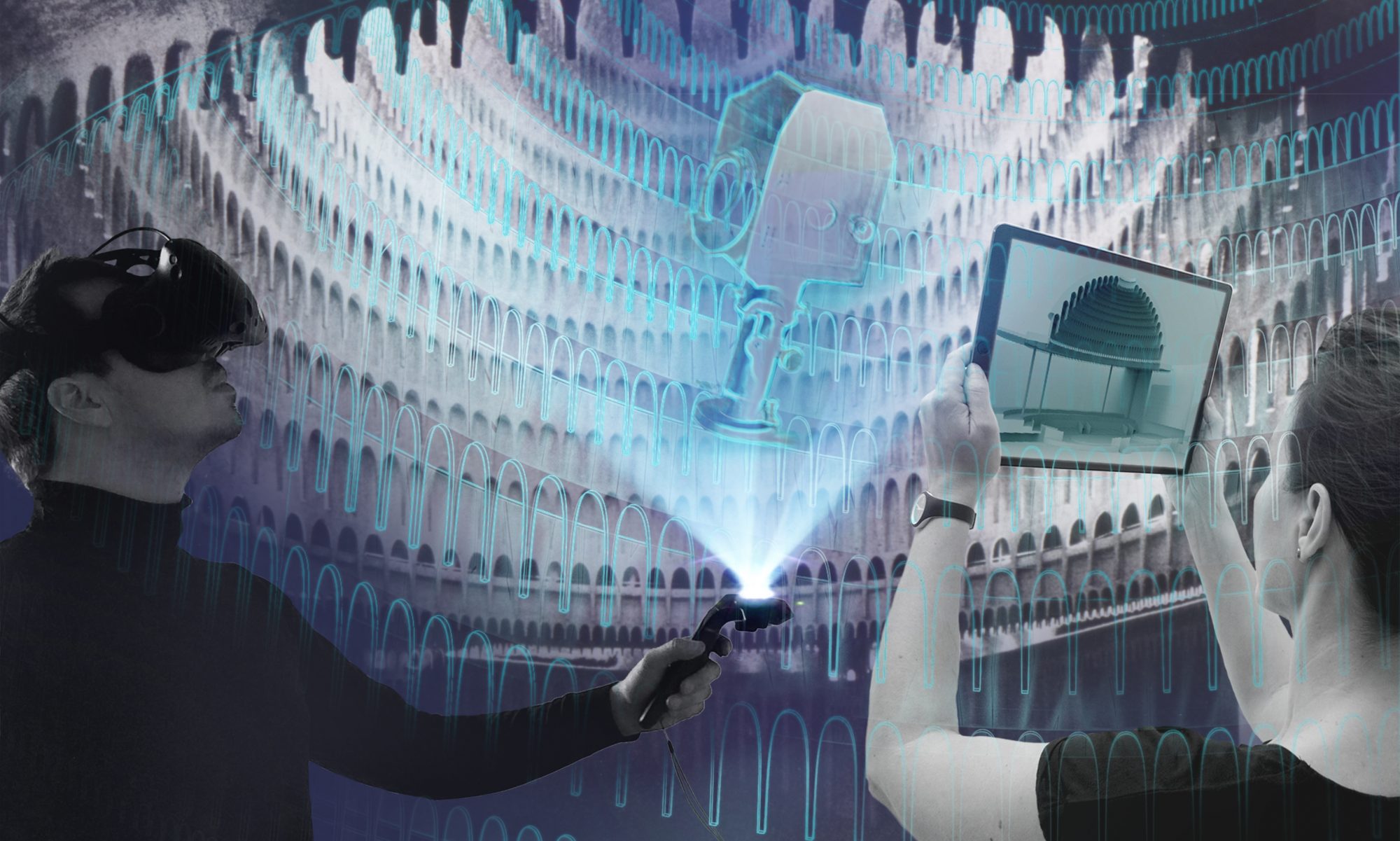In a field test, we tested a WebXR prototype for setting up the Gerriets TRUMPF 95 curtain track with the technical team of the Deutsches Theater Berlin at the end of April 2021.
The prototype developed by the digital.DTHG team, described in this blog article, aims to improve and facilitate working on and backstage with digital technologies. The assembly instructions, in this case for the TRUMPF 95 curtain track from the Gerriets company, are designed as a transferable sample solution.
The prototype is designed on the basis of WebXR technology. This means that 3D content can be used device-independently in various variants. The instructions can therefore be displayed in the browser itself (desktop variant), in augmented reality mode (via tablet or AR glasses) or in virtual reality mode with VR glasses.

Our main questions, which we elicited on site with the technicians, are presented below. The answers are paraphrased from the comments and opinions of the participants:
What was your first impression, how well did you get along?
- On the smart phone, tablet and computer, the operation was very self-explanatory.
- The operation of the VR and AR glasses had to be explained briefly, but then the use of the application was comprehensible.
- After initial skepticism, the digital setup help was helpful overall, because the individual steps are quite complex
The 3D models in the prototype were very detailed. Could the representation also be more abstract?
- The realistic and detailed rendering was very helpful. The level of detail is necessary to be able to quickly identify the components. During assembly, you don’t want to “translate” a too abstract representation into reality
- The work steps could be shown in more detail and include more information: Which tool do I need and where is it used?

How practical do you think such a tool is?
- I can already imagine working with a tablet or a touch screen on stage.
- Augmented reality glasses are probably very sensitive and still somewhat unwieldy, but that will change in the future.
What additional features would you like to see?
- I would like to have my own account, so that I can adapt existing tutorials.
- For example, I can imagine leaving notes for colleagues, for specific solutions within our house or for the respective production. As an audio commentary or as a graphic sketch.
What other scenarios and target groups can you imagine for the application?
- I can imagine many more tutorials for other equipment and machinery, such as scene conversions or complex stage setups.
- Definitely helpful for pre-visualization, for example, when building a new theater, an expansion or renovation of the house.
- Such an application is useful for technical onboarding: New colleagues or stagehands can familiarize themselves with the conditions in advance.
- With such a tool, tasks that rarely occur could also be practiced in a knowledge check.
- The tool would be a good method to accompany safety checks and maintenance.
- Such a method would be a very good addition to the teaching materials in training, vocational school or university as a digital exercise situation.

What technical barriers and organizational challenges do you see?
- Isn’t that much too expensive, where do the budgets for such a way of working come from?
- I found the handling with the additional “devices” complicated, because I don’t want to work with mouse and keyboard on stage.
- What about data protection? We don’t want our employer, for example, to be able to “monitor” us directly – or even look over our shoulder virtually.
- Many theaters do not yet have a basis for this kind of working method, and often there is not even a stable WLAN connection.
- We need time to try it out and learn, because not all colleagues have the understanding for the new technologies.
- Such a digital app requires high quality 3D data: who provides the data, who hosts it and who maintains it?
The impulses and questions will be taken into further development. We would like to thank all DT employees who participated in this practical test: Olaf Grambow, Marco Fanke, the technicians Jörg Tippelmann, Philipp Kurth, Martin Ziebart, Katharina Langer, Naomi Mead.
We would like to thank Andreas Gause, Director Marketing and Key Account Management Gerriets, who guided us through the process with advice and support and provided a curtain rail for the various tests.
digital.DTHG Team: Pablo Dornhege, Franziska Ritter, Vincent Kaufmann, Maria Bürger
Photo credit: © digital.DTHG / Maria Bürger


